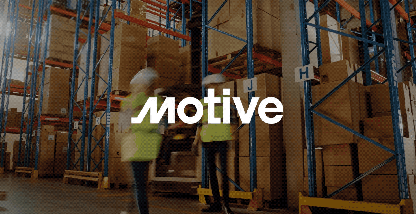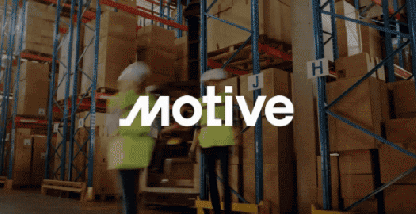Visit the SBA’s Coronavirus Relief Options webpage to learn more about the programs we discuss here.
SBA Participating Lenders have again begun processing applications for emergency economic relief. Here are the US Treasury’s Application and Instructions for small businesses that are looking to apply for the Paycheck Protection Program.
You can find a list of Lenders participating in the PPP as of April 23, 2020 here. Also, you can view this document published by the US Small Business Administration for information and answers to Frequently Asked Questions about the PPP and here is some specific guidance for self-employed individuals and independent contractors.
The COVID-19 pandemic is hitting the economy hard. To counter the cash shortage and help meet the working capital requirements of certain businesses, the U.S. Federal Government passed the CARES Act into law on March 27, 2020, but after about two weeks, the PPP and EIDL exhausted those funds. That prompted a re-capitalization of almost 360 billion dollars to reopen the helpful and extremely popular programs through the “Paycheck Protection Program and Health Care Enhancement Act,” and the money is flowing again.
Key details of the CARES Act’s PPP
The CARES Act expands the SBA 7(a) Loan Program to meet the working capital requirements of certain businesses by creating the “Paycheck Protection Program” (“PPP”). In general, businesses and nonprofits with fewer than 500 employees should be eligible.
Through the PPP, the Small Business Administration (SBA) will enable private lenders to provide 100 percent federally-backed, low-interest loans, to eligible businesses to help pay operational costs for the Covered Period (Feb. 15 to June 30, 2020). Most importantly, these loan amounts are forgivable if your business meets specific criteria (which we will cover further in this post).
How much can I get and what can I use it for?
Generally, the maximum loan amount is calculated by a formula based on average total monthly payments for payroll costs over the prior year, multiplied by 2.5, up to $10 million. You can find more details on the specifics here.
Avg. monthly payroll cost x 2.5 = Loan amount (up to $10 million)
In addition to the usual business expenses these SBA loans are used for, this particular cash infusion can also be used for:
- Payroll
- Rent and Mortgage interest costs
- Health benefits
- Insurance premiums
- Utilities
- Interest on other debt obligations incurred before the covered period (not included in forgiveness calculation)
Deferred payment and waiver
First, payment of a PPP loan is deferred for impacted businesses for six months up to one year, so you can concentrate on running your business without having another monthly payment.
Further, some or all of the loan could be forgiven; payments made for payroll costs, mortgage interest, rent, and utilities are eligible.
The degree of loan forgiveness is conditioned on substantially retaining workforce at or near their current pay rate: the forgivable amount will be reduced in proportion to reductions in “full-time employee equivalents” and for certain reductions in employee compensation greater than 25 percent. Also, under the current rules, the forgivable amount will be reduced if you use more than 25 percent of the funds for covered costs other than payroll.
How do I get it?
The PPP is intended to be easy to apply for. Though, among other things, you do have to certify in good-faith that:
- The loan is needed to continue operations during the COVID-19 emergency
- Funds will be used to retain workers and maintain payroll or make mortgage, lease, and utility payments
- The applicant does not have any other application pending under this program for the same purpose
- From Feb. 15, 2020, until Dec. 31, 2020, the applicant has not received duplicative amounts under this program (you can’t get multiple PPP loans from different lenders).
You should also make sure that you have the documents you need to show what your payroll costs are (remember, that is the way the loan amount is calculated). An important note for self-employed folks: you will need your 2019 1040 Schedule C to calculate your payroll costs for both calculating your maximum loan amount and your debt forgiveness amount.
The SBA’s Economic Injury Disaster Loan (EIDL) Program
The CARES Act also addressed small business needs by modifying the terms and criteria for EIDLs, making available low-interest emergency loans up to $2M for the period between Jan. 31, 2020, and Dec. 31, 2020. The repayment terms can vary by application, up to a maximum of 30 years.
These loans are available to certain small businesses, private non-profits, small agricultural cooperatives, and small aquaculture businesses.
Eligibility criteria
To be eligible for these loans, a business must meet certain SBA size standards (generally 500 or fewer employees). You can use this online SBA tool to determine if you qualify.
The CARES Act also waives the usual EIDL requirements such as personal guarantees, the inability to find credit elsewhere, and provisions stating that you must be in business for one year prior to the disaster.
The best part about the expanded EIDL program is that it allows applicants to request an emergency grant of up to $10,000. Unfortunately, as of the time of publication, the SBA isn’t processing applications for these grants as existing applications have exhausted the appropriated funds.
Conclusion
In response to the financial hit businesses are taking as an effect of the COVID-19 Pandemic, The CARES Act creates and expands some very beneficial programs for small businesses just like yours.
Both the new Paycheck Protection Program and the relaxed Emergency Injury Disaster Loan program can give you the financial relief you need to keep your employees on the payroll, keep the lights on, and keep your business open.
If anything does change, we will update this blog post and add new information. Stay tuned.







